Pashupatinath Temple
The Pashupatinath Temple is a famous and sacred Hindu temple complex that is located on the banks of the Bagmati River, approximately 5 km north-east of Kathmandu in the eastern part of Kathmandu Valley, the capital of Nepal. The temple serves as the seat of Pashupatinath. Only Hindus are allowed through the gates of the main temple. The inner sanctum has a Shiva lingam and facing the temple sits the largest statue of Nandi the bull, the vehicle of Shiva. There are hundreds of Shiva lingams within the compound. The Pashupatinath temple complex is part of UNESCO’s World Heritage Site. The temple’s age is not exactly certain, but legend indicates its existence to date back to 400 BC.

-
Reviews 1 Review5/5
-
Vacation Style Holiday Type
-
Activity Level Leisurely
-
Pashupatinath temple honors the Hindu Lord, Shiva. Shiva is the god of transformation or destruction (which is pretty appropriate considering the temple’s main function), and conforms to the Hindus’ belief in karma and reincarnation.
Pashupatinath Temple is the oldest Hindu temple in Kathmandu. It is not known for certain when Pashupatinath Temple was built. But according to Nepal Mahatmaya and Himvatkhanda, the deity here gained great fame there as Pashupati, the Lord of all Pashus, which are living as well as non-living beings.
This temple is an important destination for art historians. It displays a variety of temple design some of which are Dome style, Pagoda style, Shikhara style and so on. Additionally, there are varieties of statues and sculptures around the complex. There are statues made out of stone, metal, and wood. The door and pillars around the temple area are carved in beautiful shapes of God and griffins.
The main temple is double storied and follows Pagoda architecture. The current structure is about 400-year-old, erected by Mall King Bhupendra. It was built by replacing the old structure that was eaten by termites. So, we do not know what was the original structure like. No photography is allowed inside the main temple. All you can see from the outside is the back of the big bull in brass looking towards the Linga from the entrance door. Colorful and carved wooden strips or rafters support the roofs. That makes it look more Chinese or Tibetan in appearance, though the deities carved are all Hindu. Temple has four silver doors and you can see the Linga from any of them. The roofs are made of copper plated with Gold and the pinnacle is pure gold.
You can go around the high walls of the outer complex of the temple. And get a top view of the temple. Also, see the white domes with golden spirals from the side of the cremation ground.
Don’t miss the chance to explore the busy marketplace, which surrounds the temple complex. Browse stalls with animated hawkers offering everything from incense to prayer beads and handmade icons of deities. Pashupatinath Temple is about a 15-minute taxi ride from Kathmandu Durbar Square. Buses departing from Ratna Park also stop at the temple, but these are often crowded.
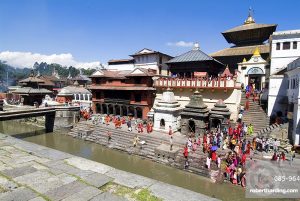
What should you know before going to Pashupatinath Temple
There are some few rules that you should keep in mind while you visit any temples of Nepal.
- Remove your shoes before entering the temple. Outside, around the temple, it is ok to put on your shoes.
- You are not allowed to carry any items that are made of Leather (like Leather Jacket, Purse, belt etc) inside the temple.
- Never think of drinking alcohol and smoking inside the temple.
- There is a culture to go around the temple, so always use clockwise direction to go around temple.
- At most of the temples, people are allowed to take photographs but only outside the temple within the temple’s compound, but never try to take snaps inside the temple.
- You should take care of your shoes and other belongings which you have put outside before entering the temple; always make sure that you have kept your belongings inside the right locker.
Daily Rituals at Pashupatinath Temple
Pashupatinath is also one of the few living cultural heritage sites in the world. Unlike other cultural sites or museums, Pashupatinath is the center of energy with active participation of people at all times of the day, every day. The daily rituals of Pashupatinath Temple are as follows:
4:00 am: West gate opens for visitors.
8:30 am: After arrival of Pujaris, the idols of the Lord are bathed and cleaned, clothes and jewelry are changed for the day.
9:30 am: Baal Bhog or breakfast is offered to the Lord.
10:00 am: Then people who want to do Puja are welcomed to do so. It is also called Farmayishi Puja, whereby people tell the Pujari to carry out a special Puja for specific reasons. The Puja continues till 1:45 pm in the afternoon.
1:50 pm: Lunch is offered to the Lord in the main Pashupati Temple.
2:00 pm: Morning prayers end.
5:15 pm: The evening Aarati at the main Pashupati Temple begins.
6:00 pm onward: In recent times the Bagmati Ganga Aarati that is done by the banks of the Bagmati has been gaining popularity. There are larger crowds attending on Saturdays, Mondays and on special occasions. Ganga Aarati along with Shiva’s Tandava Bhajan, written by Ravana, is carried out during the evening Ganga Aarati.
7:00 pm: Doors close.
Apart from the daily rituals, special observed are plotted during special dates of the lunar calendar.
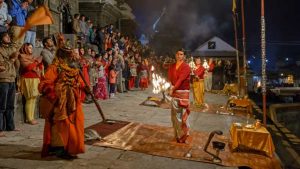
Entry Fee: NPR 1000 for Foreign and SAARC Nationals
Free for Indian and Nepali Nationals
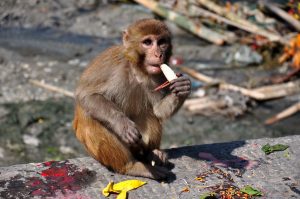
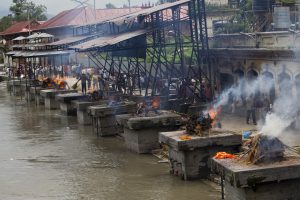
Highlights include:
A glimpse at the Pashupatinath temple from the outside looking in
Converse with one of mysterious Sadhus that often congregated here
Going past Pandra Shivalaya is a quiet forested area you can walk though
Beware of the monkeys – they steal food, shiny objects and will take things from your hand or bag!
Around Pashupatinath
The Ghats: various areas surrounding the Bagmati river where cremations occur. The Pashupatinath Ghats for a look at ritual cremations. The Arya Ghat is where the members of the royal family are cremated.
Vatasala Temple: with a shrine to Bhairab.
Ananta Narayan: rare terra-cotta statue
Gorakhnath Temple Complex: massive area filled with shrines
Guhyeshwari Temple: another off-limits temple to non-Hindus it is where Sati’s Yoni is.
Ram temple: large temple where many Sadhus gather. Visiting the votive shrines, the Pandra Shivalaya and the Ram Temple across the river along the terraces
Sati’s Gate: a gate for Shivas wife
Sprawled across a huge area in the outskirts of Kathmandu, the Pashupatinath Temple is well accessible by public and private transport. From Tribhuvan International Airport and Boudhanath Stupa, it takes around 10 minutes to reach the temple by taxi. From Thamel Street and Kathmandu Durbar Square, reaching the temple will take around 20 minutes by a cab. Local buses are also available although they tend to be overcrowded.

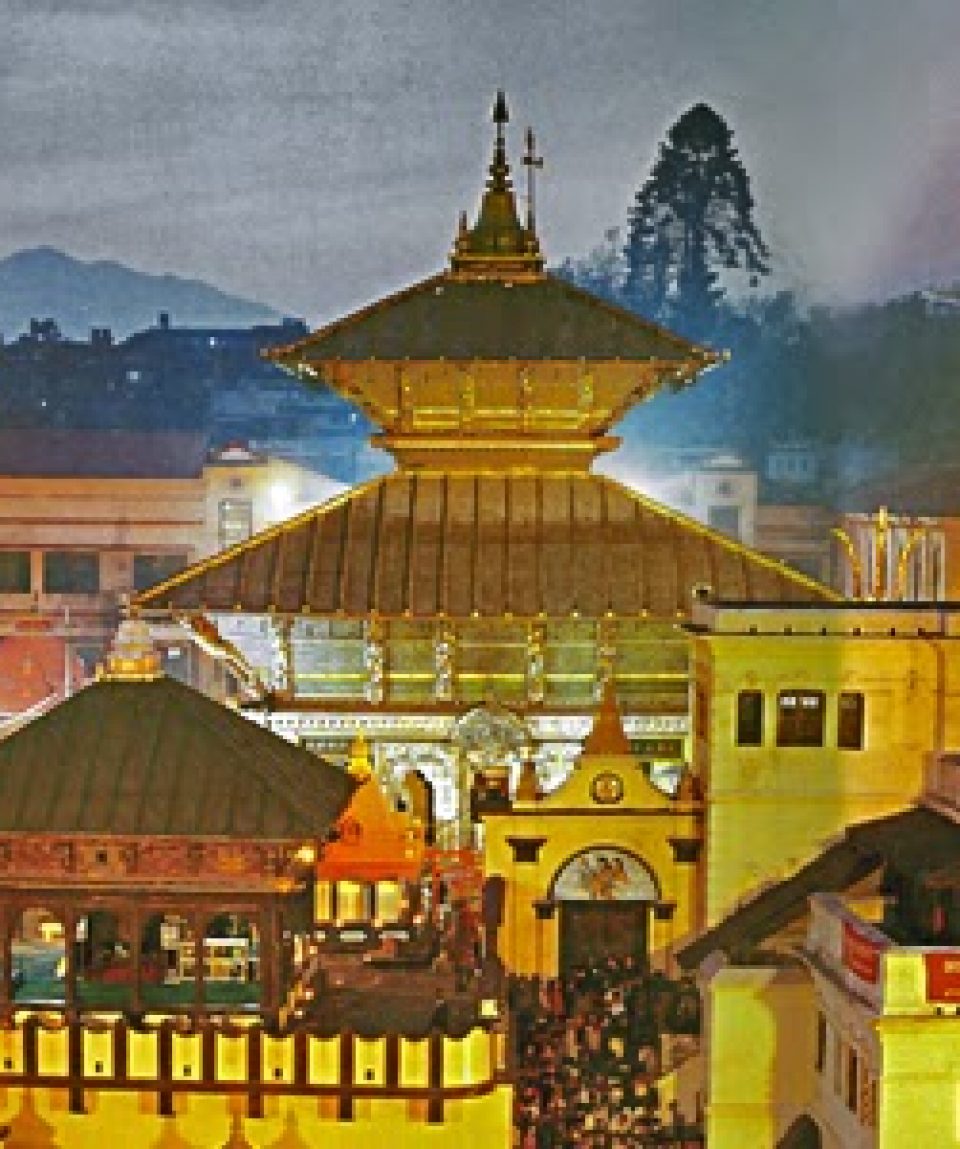
So soulful....om nama sivaye